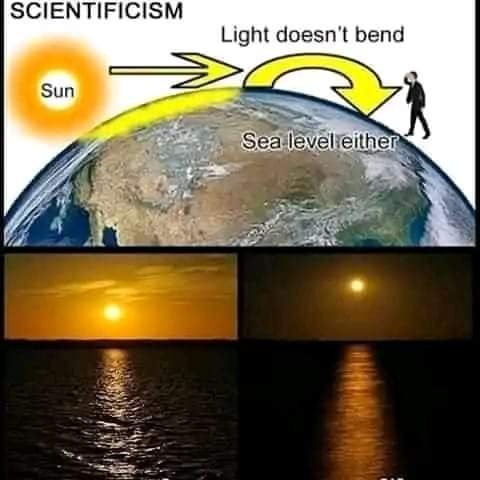
The Moon Is Not A Reflector Of The Sun’s Light.
In direct sunlight a thermometer will read higher than another thermometer placed in the shade, but in full, direct moonlight a thermometer will read lower than another placed in the shade.
If the Sun’s light is collected in a large lens and thrown to a focus point it can create significant heat, while the Moon’s light collected similarly creates no heat.


The earth is a plane, not a planet.
The word planet comes from the greek term "asteres planetai", which means "wandering stars".
Mercury, Venus, Mars, Jupiter and Saturn are the 5 "planets aka "wandering stars", that are bright enough to be seen with the naked eye.
The so called "planets," known to the ancients as "wandering stars," were named such because they were observed then as we can observe today to wander the heavens taking their own unique spirograph like patterns making both forward and retrograde motions over and around the Earth during their cycles. Meanwhile the "fixed stars" were named such because they were observed then as we can observe today to stay fixed in their constellation patterns night after night, year after year, century after century, never changing their relative positions.
Now what you need to understand is that the earth is not a "planet", because the earth is not "wandering"... It is the stationary floor of our cosmology.
The sun, moon and stars circle above us like an intelligently created clock.

The Law of Perspective dictates that the angle and height at which an object is seen diminishes the farther one recedes from the object, until at a certain point the line of sight and the seemingly uprising surface of the earth converges to a vanishing point (i.e. the horizon line) beyond which the object is invisible.
In the globe earth model the horizon is claimed to be the curvature of the earth, whereas in reality, the horizon is known to be simply the vanishing line of perspective based on the strength of your eyes, instruments, weather and altitude.

The sun and the moon are opposite lights. The recorded differences in the temperatures of both prove that the moon is not reflecting the sun.
The Sun’s light is golden, warm, drying, preservative and antiseptic, while the Moon’s light is silver, cool, damp, putrefying and septic.
The Sun’s rays decrease the combustion of a bonfire, while the Moon’s rays increase combustion.
Plant and animal substances exposed to sunlight quickly dry, shrink, coagulate, and lose the tendency to decompose and putrify... grapes and other fruits become solid, partially candied and preserved like raisins, dates, and prunes, animal flesh coagulates, loses its volatile gaseous constituents, becomes firm, dry, and slow to decay.
When exposed to moonlight, however, plant and animal substances tend to show symptoms of putrefaction and decay.

The truth is the Sun and Moon are equal divine balanced opposites made for signs and seasons, to light the earth, and divide day from night.
The Moon is not a reflector of the Sun’s light but emanates a demonstrably unique light of its own, It is completely self luminescent and semi transparent.
Via Conscious Evolution